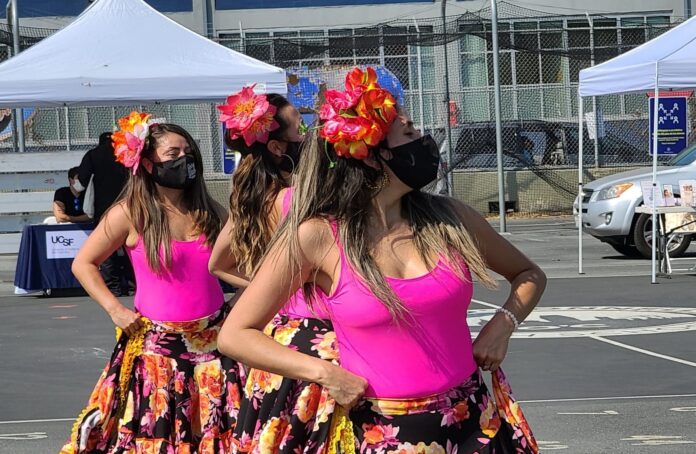From the end of 2020 and into 2021, we’re publishing our Best of the Bay 2020 Editors’ Picks, highlighting some of the tremendous people, places, and things that made the Bay Area shine during one heck of a year. View more Editors’ Picks, plus our Best of the Bay 2020 Readers Poll winners and our Readers Stories of Resilience here.
It’s hard to imagine an event harder to translate into a COVID-safe gathering than the Mission’s beloved Carnaval. The festival and parade packs the streets each year, a glorious celebration dating back to 1979 that doesn’t just honor the neighborhood’s pan-Latinx heritage, but also the very act of coming together.
The prospect of sitting 2020 out was unimaginable for event organizers. “We can’t let our lives be absorbed by the crisis,” Carnaval director Roberto Hernández told 48 Hills. “We have to find a way to keep moving forward, and to improve our health today and for what may come tomorrow.” His nimble organization found a way to do just that, and made a wonderful pivot in hosting Carnaval’s “Salud es Poder” wellness fair that took place on September 5th and 6th.
At the core of the outdoor event (where only 30 attendees were allowed to visit at one time) was a pressing need to keep the community healthy in a time of unprecedented risk. The Department of Public Health administered hundreds of COVID-19 tests a day, free groceries were given out to those in need, and dozens of healers were present, representing both Western and holistic wellness practices.
Of course, it’s hard to be healthy if you don’t have a source of income, and to that end the “Salud es Poder” fair also hosted entities like Goodwill Industries, the San Francisco Sheriff’s Office, and the SF Municipal Transit Agency, which were present to talk with community members about potential employment opportunities.
Certainly, it looked a lot different than the sprawling street party that normally constitutes the festival. But the beat of the Mission’s traditional Carnaval festivities was still present, if you listened hard. Small groups of musicians pumped out samba and salsa beats—staying six feet away from attendees, of course. —Caitlin Donohue and Carlos Cabrera-Lomelí





